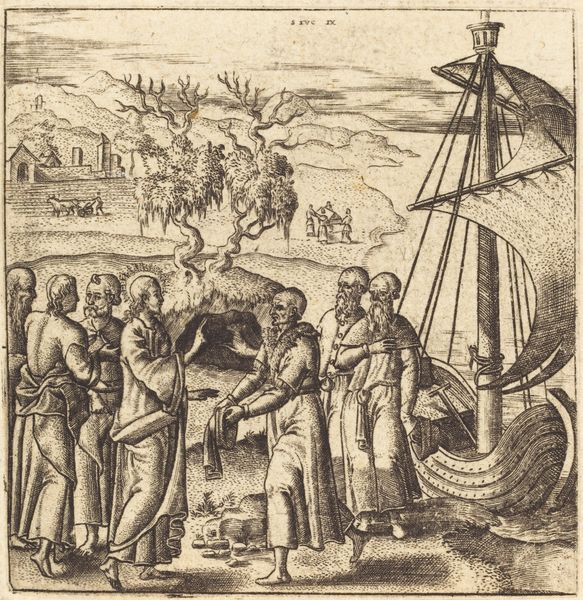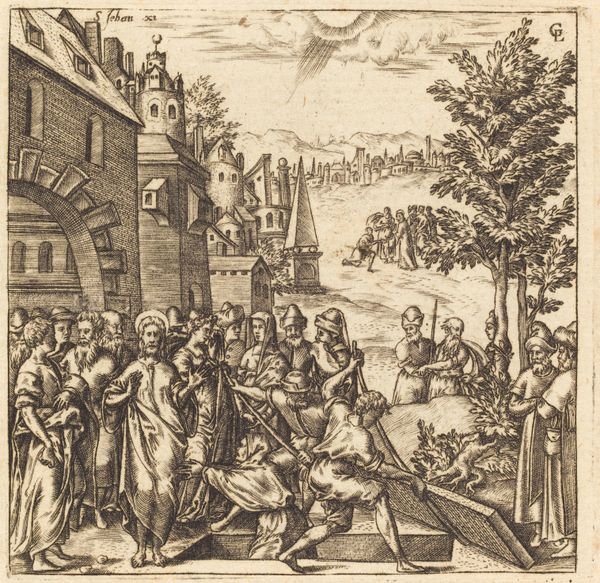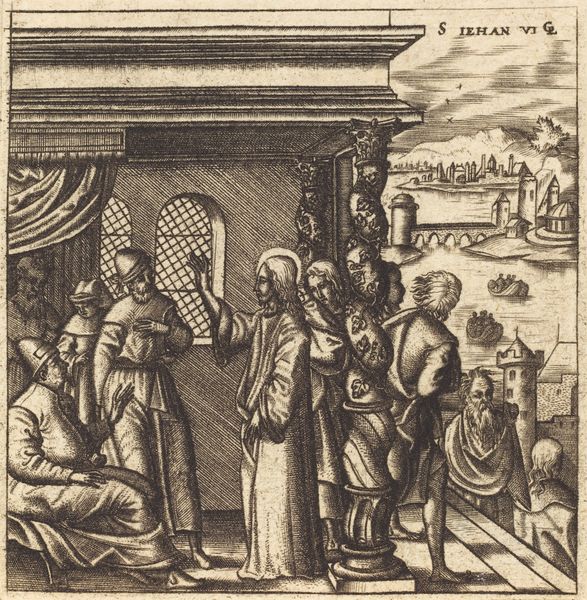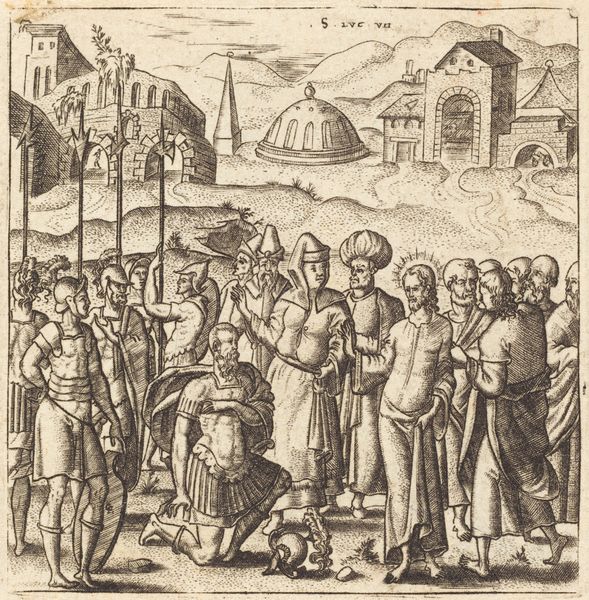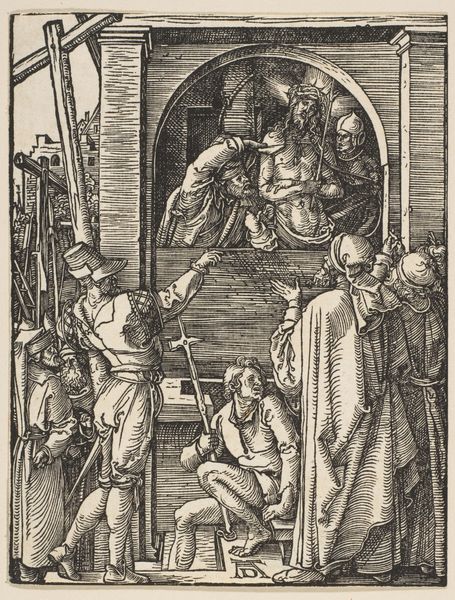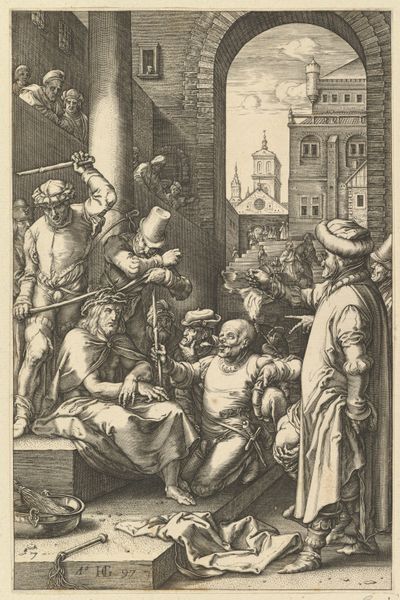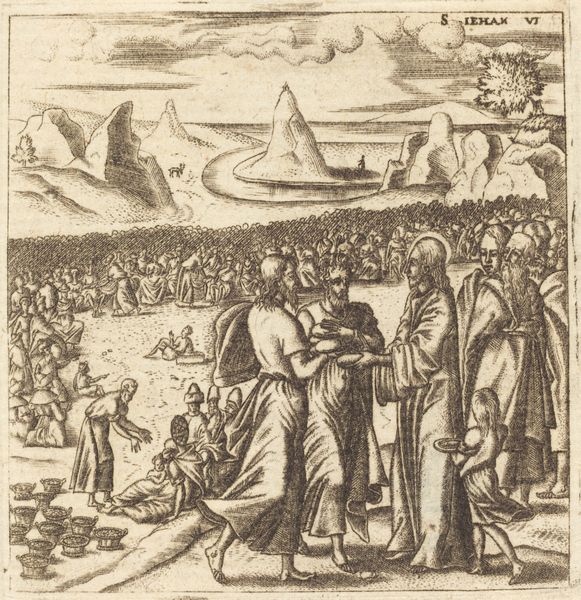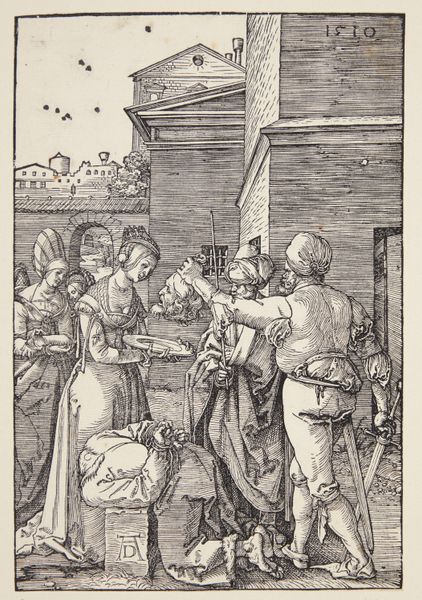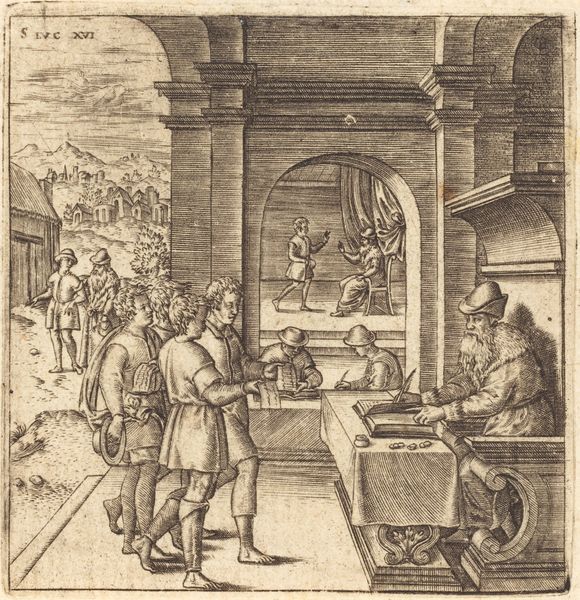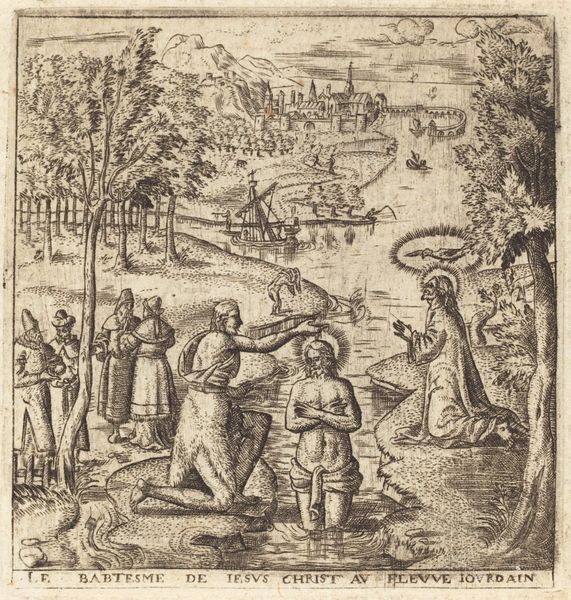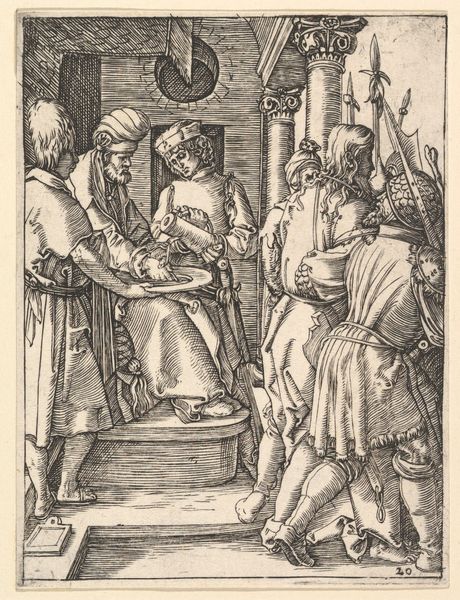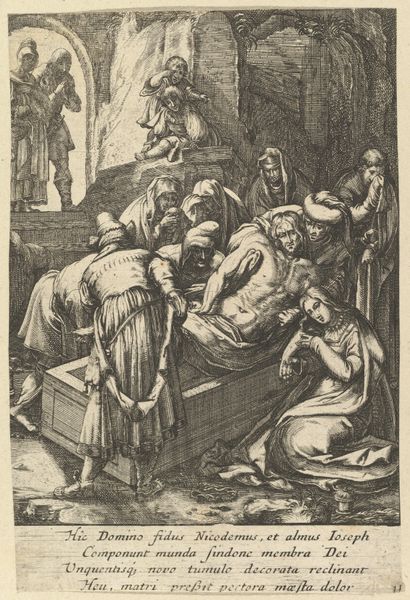
print, engraving
#
narrative-art
# print
#
figuration
#
line
#
history-painting
#
italian-renaissance
#
engraving
#
realism
Copyright: National Gallery of Art: CC0 1.0
Curator: Oh, what a delightful whirlwind of line and light! "The Calling of Matthew," engraved by Léonard Gaultier around 1576-1580, gives me a sense of organized chaos, like a memory half-faded, yet somehow sharply felt. Editor: Organized chaos is an apt description. The print presents a scene bustling with social and economic activity, overlaid with divine intervention. It immediately speaks to the intertwined nature of the sacred and the secular in 16th-century society. Curator: Exactly! Look at Matthew there, engrossed in his money-counting, almost oblivious to the radiant figures approaching. Does he *want* to be saved, or is salvation thrust upon him, do you think? And those ships in the background, are they symbols of opportunity, or perhaps the perils of worldly pursuit? Editor: I see those ships as symbols of Venice’s global reach through trade, reminding us how mercantile wealth was transforming European power structures. Matthew's profession as a tax collector for the Roman Empire underscores this theme; this print illustrates a moment laden with the socio-political tensions of the time. It serves as a kind of religious propaganda too, highlighting Rome's claim to spiritual authority. Curator: Religious propaganda, you say? Hmmm… Maybe. But Gaultier’s realism almost feels radical, doesn’t it? Everyone looks so ordinary, so flawed! Not saints at all. Like us, perhaps, caught between mundane concerns and the beckoning light. And the artist's masterful use of engraving to sculpt form and texture gives an intimacy to such a loaded scene. Editor: True. Yet, Gaultier's masterful technique—yes, the engraving’s precision lends clarity and gravity to the narrative. His artistry also flatters the image’s central message, making it palatable to diverse audiences—religious devotees, merchant guilds, noble families, even ordinary folk! Curator: Well, I remain swayed. This piece shows that there is always room for grace, even for us tax collectors in spirit. Editor: And perhaps for historians, too, grounded in facts but always looking for new interpretations. Thanks for opening up the depths of this image.
Comments
No comments
Be the first to comment and join the conversation on the ultimate creative platform.
